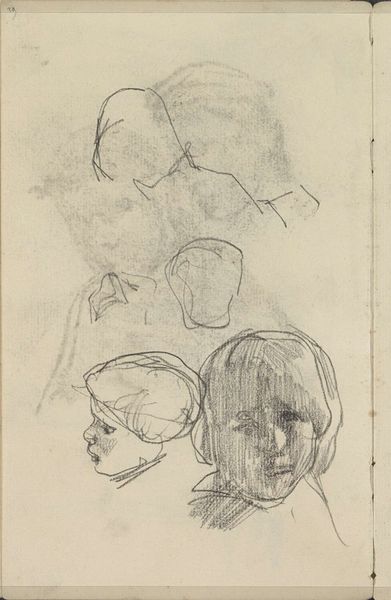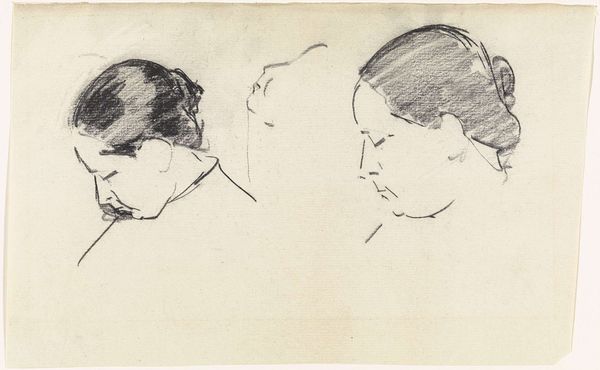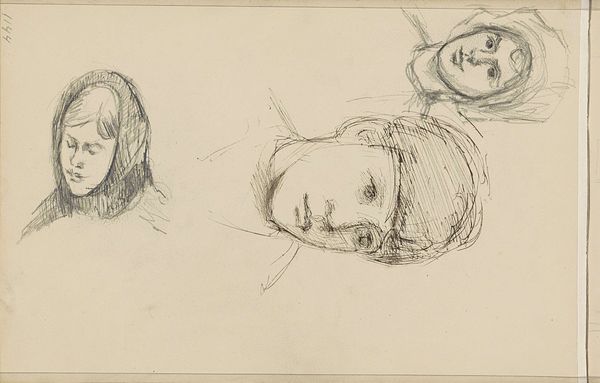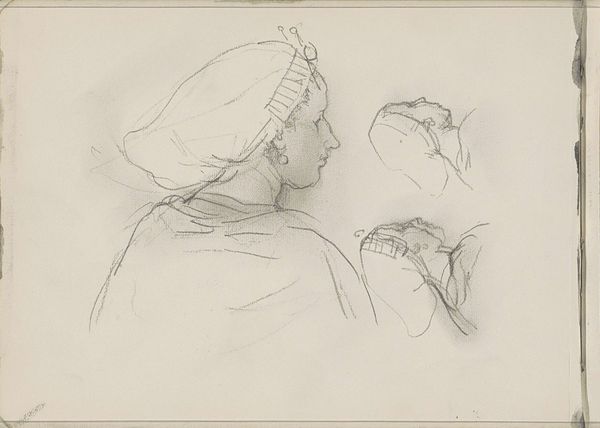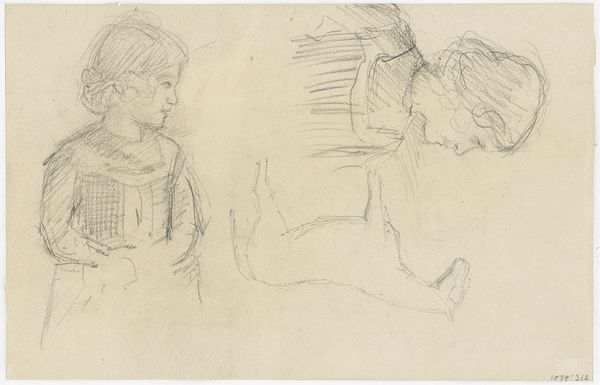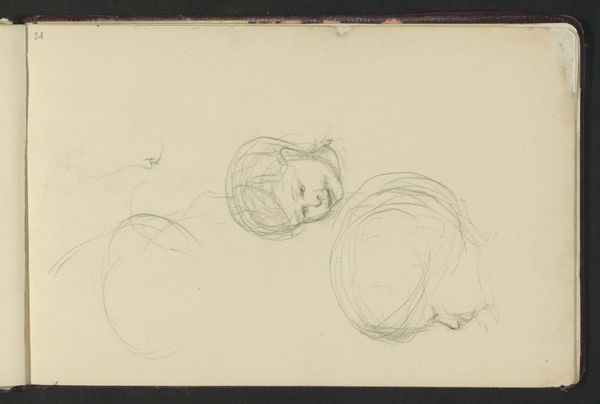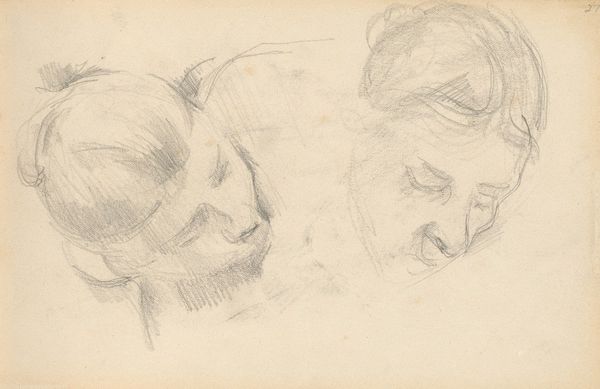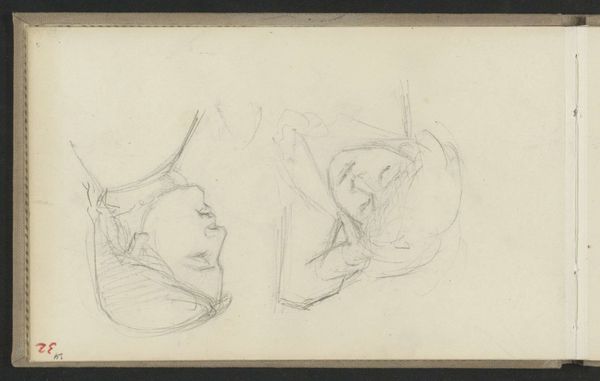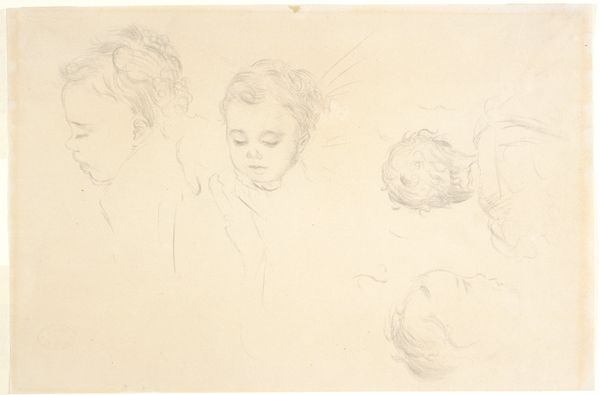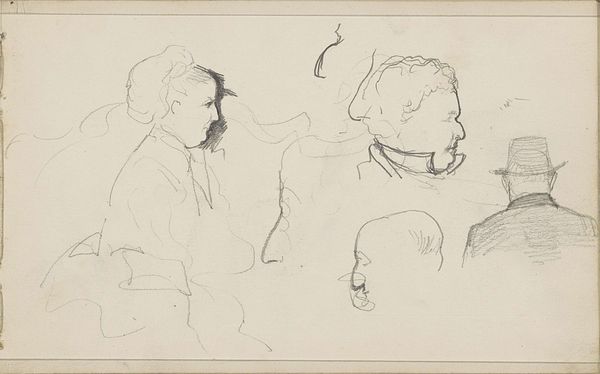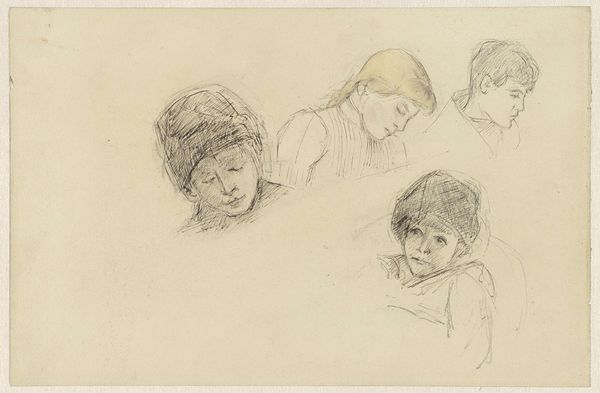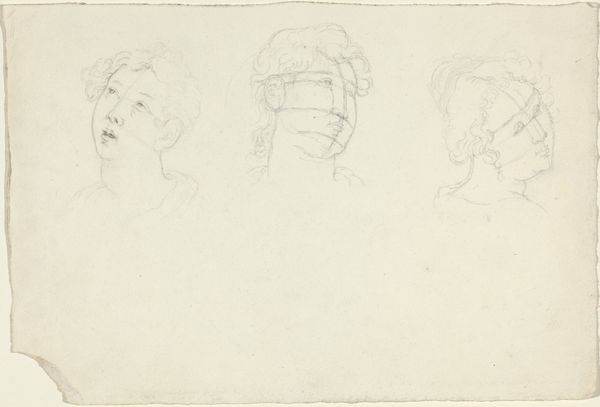
drawing, pencil
#
portrait
#
drawing
#
impressionism
#
pencil sketch
#
pencil
#
portrait drawing
Dimensions: height 190 mm, width 290 mm
Copyright: Rijks Museum: Open Domain
Curator: Jozef Israëls' "Twee vrouwenhoofden", dating between 1834 and 1911. It's a drawing currently held here at the Rijksmuseum. Looking at it, what's your initial reaction? Editor: Well, there’s an immediacy that jumps out. It feels raw, like a fleeting glimpse of a thought. And the way he uses pencil—so delicate, almost tentative. What about you, what catches your eye? Curator: For me, it's the clear display of technique that speaks to the changing role of drawing at this time. It's a shift from just preparatory work for paintings to a medium in its own right, used to capture observation and emotion with the portability and efficiency that pencil affords. It raises questions about Israëls' approach to his models, the power dynamic in the studio. Editor: Power dynamic…Interesting angle. I'm caught by the one figure shielding her face—the vulnerability is palpable. Almost a childlike gesture. Maybe shielding her eyes from judgement? It hints at deeper stories we can only guess at. Curator: The rapid sketch also shows a democratizing trend of artmaking during this period, where artists experiment with a more immediate, less staged approach, rejecting some traditional studio practices. The type of paper, the choice of a relatively inexpensive tool like the pencil, is telling. Editor: Definitely gives an accessible feel! Though it's more than just 'sketches.' The economy of line is really powerful. It doesn't feel unfinished. It’s like Israëls has captured an essential truth about his subjects. There's something timeless about these expressions. Curator: Agreed. The materiality—paper, graphite—directly relates to its artistic value in this context, and offers valuable insights into production and consumption during that time. What an illuminating process of inquiry. Editor: Yes, getting pulled into art is like opening the gates to hidden perspectives and ideas that, on the surface, seemed to only show a face.
Comments
No comments
Be the first to comment and join the conversation on the ultimate creative platform.
